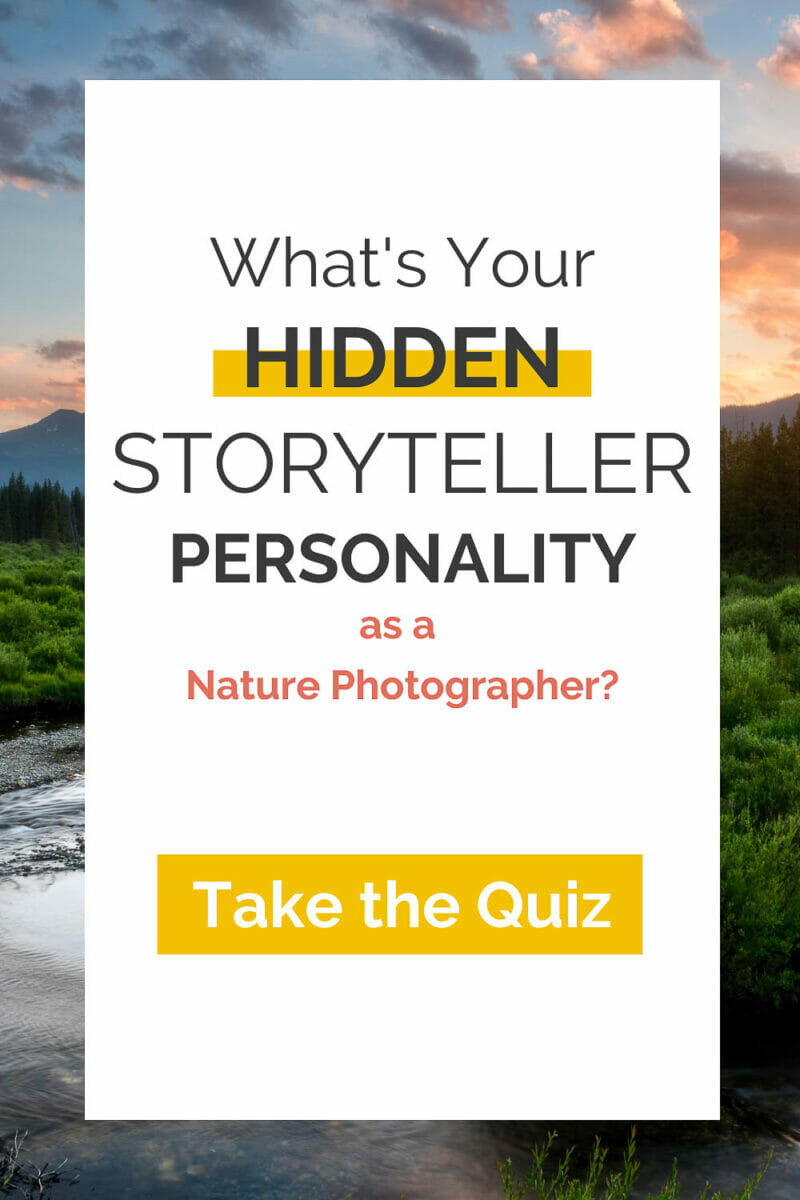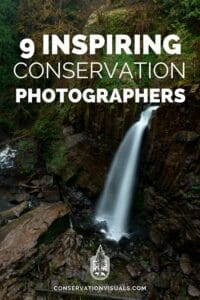Read Time: 7 minutes
Conservation photography has the power to capture moments of beauty, tragedy, and hope in nature, telling stories that can move people to take action.
The photographers behind these images stand out not only for their technical skills and artistic vision but also for their passion and dedication.
Join us as we journey through the lens of nine inspiring conservation photographers to explore what goes into creating the breathtaking images that raise awareness and promote action on the planet’s most pressing environmental challenges.
Clay Bolt
Bolt’s work highlights the importance of preserving our planet’s fragile ecosystems and protecting the creatures impacted when those environments are disrupted. Most notable is his work documenting North America’s native bees, specifically the rusty-patched bumble bee.
The species experienced widespread population decline attributed to many factors, including habitat loss, pesticide use, climate change, and disease.
Partnering with organizations such as the Xerces Society, Bolt embarked on a mission to photograph these often-overlooked pollinators, showcasing their beauty and raising awareness about their vital role in our ecosystems. His efforts to raise awareness of the rusty patched bumble bee’s plight were instrumental in the U.S. government listing the species as endangered in 2017.
“I believe that photography has the power to tell a story, to connect people with nature, and to create change.” Clay Bolt
Visit Clay’s website >>
Noppodol Paothong
Prior to Paothong’s two decades of work capturing the beauty and complexity of the lives of these fascinating creatures, there had been no in-depth photographic account of the sage-grouse nor their natural habitat, often referred to as the “Sagebrush Sea.”
Due largely to its conversion to agricultural uses, the diminishment of that habitat has led to a significant decrease in the species’ population.
Paothong’s approach can be thought of as an “inch wide and a mile deep.” The commitment and depth with which he meticulously and exhaustively documents his subjects is beyond inspiring.
His work with the sage grouse is archived in his two large-format national award-winning books, “Save the Last Dance” and “Sage Grouse, Icon of the West.” B
But, he doesn’t just photograph sage-grouse all day (check out his video, “Day of a Photographer,” where, yes, he is photographing sage-grouse) and publish books; he also offers workshops that accomplish exactly what conservation photographers are driven by: inspiring change.
Mike Doyen, President of the Ozark Rivers Audubon Chapter, highlights the level of impact Paothong has when he recounts a participant’s response in one of Paothong’s workshops who said, “I am moved to take action and I will.”
“By protecting one species, we’re also protecting more than 300 others.” Noppodol Paothong
Visit Noppodol’s website >>
Morgan Heim
An example is her series of fine art portraits, “A Last Leap Towards Flowers,” which pays tribute to the animals killed along our roadways, shining a spotlight on the massive devastation of wildlife-vehicle collisions.
Whether in film or photography work, Heim tends to focus more on local stories where she can dive deep to best communicate complex environmental concepts in an engaging and accessible way. By immersing herself in these projects, she forms deep connections with the wildlife and environments she documents.
In addition to being a creator, Heim also advocates for women in conservation visual storytelling through the Her Wild Vision Initiative she co-launched in 2020. She is a also frequent guest on our podcast, Impact: The Conservation Photography Podcast!
“I want my work to be a catalyst for change, inspiring people to take action for our planet.” Morgan Heim
Visit Morgan’s website >>
Anthony Oichango
This commitment led him to establish TonyWild, a photo-led platform that empowers young people with the necessary photography tools and training to make an environmental impact.
The teaching format includes workshops, online courses, and one-on-one mentoring sessions, covering topics such as wildlife photography, storytelling, and the ethics of conservation photography.
His students and colleagues often praise Tony for his engaging teaching style and ability to connect with learners on a personal level.
“What I love [about] being a photographer the most is just seeing people getting back to me and saying, ‘The image you took made me realize that I need to do something.'” Tony Oichango
Visit Anthony’s website >>
Suzi Eszterhas
With a multifaceted approach to conservation, Eszterhas uses not only her photography skills to highlight the beauty and fragility of our planet’s wildlife but has also published 25 books for both adults and children, the most notable being her “Eye on the Wild” series.
Her most recent book, “New on Earth: Baby Animals in the Wild,” features intimate and touching moments between mothers and their young.
In addition to being a photographer and an author , Eszterhas is also an educator providing wildlife photography tours in locations including Brazil, Borneo, South Africa, Australia, and Indonesia, a public speaker lecturing at research institutions and major photography conferences as well as at elementary schools.
She is founder and executive director of Girls Who Click, a nonprofit set up to encourage young women to enter the field of wildlife photography.
“I hope my images will help people fall in love with these creatures and inspire them to take action to help protect them and their habitats.” Suzi Eszterhas
Visit Suzi’s website >>
Tony Wu
His images are striking in their beauty, but also in the stories they tell, whether that be the expression of joyful community between whales exhibited in “A Gathering of Giants” or the death and devastation within those same communities caused by the more passive human destruction of ship strikes and seismic testing noise pollution.
Through his photos and accompanying captions, Wu’s respectful fascination and admiration of ocean wildlife big and small – like a single fertilized embryo of sailfin snappers(!) – is obvious.
Wu carries himself with integrity in the methods he employs to respectfully capture underwater images while often using humor to create connections between humans and ocean wildlife, making the viewer realize how similar we all are.
Carefully navigating the challenges that come with his profession, Wu faces each obstacle with calculated caution and unwavering determination.
“There is beauty in all life. We just have to pay attention.” Tony Wu
Visit Tony’s website >>
Esther Horvath
In documenting the efforts of and collaborating with the scientists behind vital climate change research, Horvath acts as an interpreter using the language of photography. Her images capture the complexity and challenges behind climate data collection, highlighting the day-to-day experiences of the scientists living in unforgiving polar environments.
With storytelling that aims to build a bridge between the scientific community and the public, Horvath is raising awareness of climate changes that will continue spreading across the planet, affecting all of us, from the Arctic to the Antarctic.
In her book, “Into the Arctic Ice: The Largest Polar Expedition of All Time,” Horvath chronicles her nearly four months with the MOSAiC (Multidisciplinary drifting Observatory for the Study of Arctic Climate) expedition aboard the Polarstern icebreaker. Photos documenting the research and life on the Arctic sea ice are accompanied by written contributions from experts participating in the expedition.
The book is only the most recent example of how Horvath’s work has helped people understand how polar research is essential to our survival on Earth.
“I felt from my inner voice that this is the path I have to follow in life.” Esther Horvath
Visit Esther’s website >>
Benjamin Von Wong
Blending creativity with his knack for capturing the public’s imagination, Von Wong encourages viewers to join the fight against environmental degradation.
One of the strategies that sets Von Wong apart from others in the field is his ability to create viral content by combining breathtaking visuals, compelling narratives, and a touch of controversy.
Take, for example, his famous “Mermaids Hate Plastic” series, where Von Wong choreographed a captivating underwater scene featuring a mermaid entangled in plastic waste, or “Strawpocalypse,” an art installation where Von Wong re-purposed used straws, both aimed at raising awareness around the environmental damage to the oceans caused by plastics.
“I am an Artist focused on amplifying positive impact. My mission is to help make positive impact unforgettable.” Benjamin Von Wong
Visit Benjamin’s website >>
Anne Readel
This courage paid off with early success. The first photo story she ever created was published in Better Homes & Gardens, followed by work published in the New York Times, Audubon magazine, and Sierra Club, among others. Her rapid rise comes not only from a place of perseverance but also from her raw talent and unique ability to see the compelling stories in her community.
Fueled by determination and passion, Readel rapidly honed her craft. She weaves together captivating stories that often highlight the delicate balance between wildlife and humans and the natural and built environments they inhabit.
Her perseverance serves as inspiration to budding conservation photographers looking to get their stories seen, teaching us the value of putting yourself out there and taking chances.
“Being in tune with your environment and in tune with yourself to find out what excites you.” Anne Readel
Visit Anne’s website >>
What’s Next
Every picture tells a story, and with the power of conservation visual storytelling, we can ensure those stories are heard far and wide.
These nine talented creatives capture the remarkable beauty and fragility of our natural world and inspire us all to take action to protect it.
Their work serves as a compass, guiding us through the complex wilderness of conservation and urging us to make meaningful strides toward preserving our planet.
As a conservation photographer, it is important to not only capture stunning images of the natural world but to do so in an ethical manner. These photographers have shown us that creating beautiful works of art is possible while simultaneously respecting the environment and its inhabitants.
Now that we have seen what these photographers can do, in the next chapter we’ll look at the ethics involved in conservation photography and how we can ensure our work is done responsibly.








